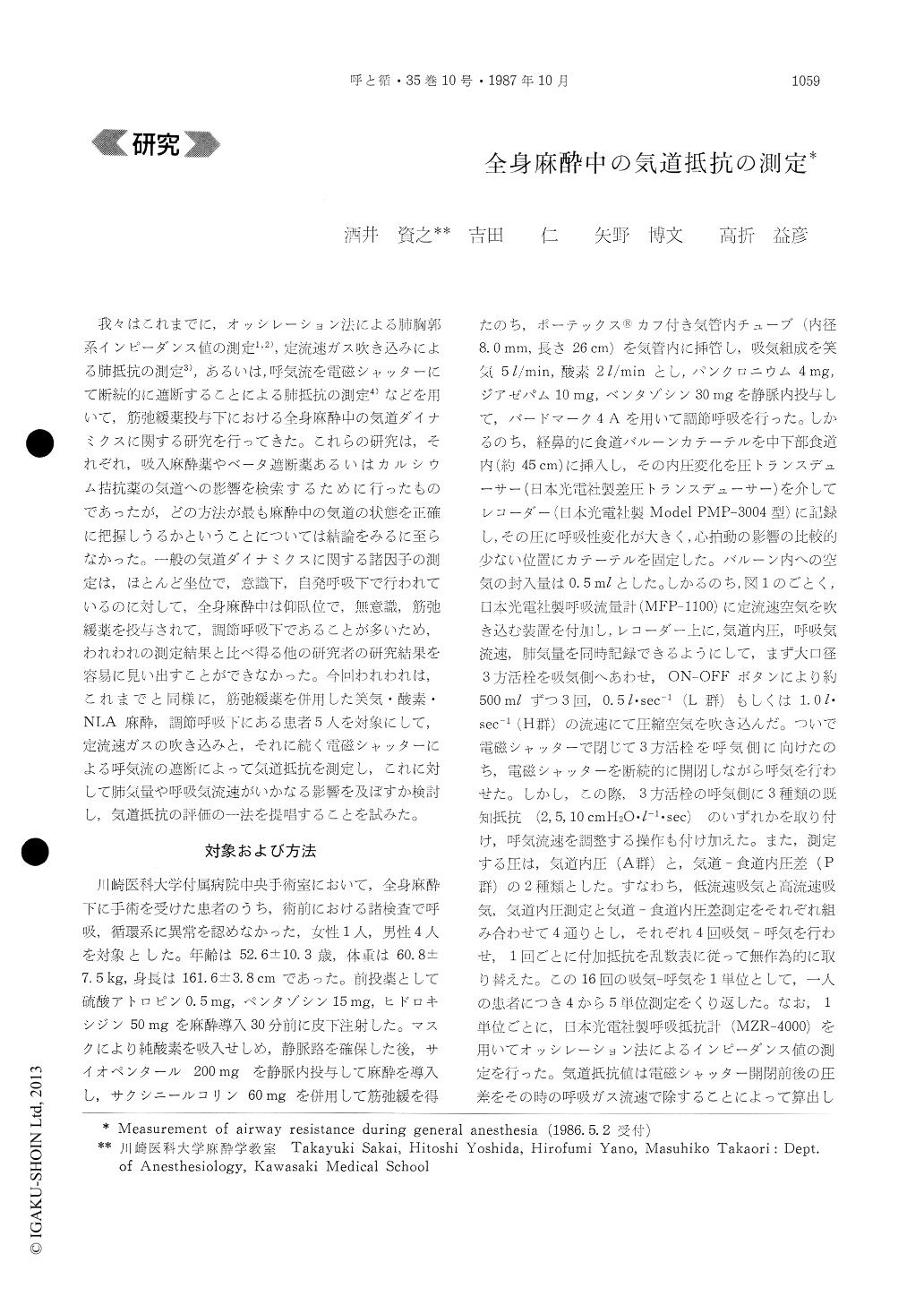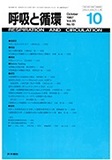Japanese
English
- 有料閲覧
- Abstract 文献概要
- 1ページ目 Look Inside
我々はこれまでに,オッシレーション法による肺胸郭系インピーダンス値の測定1,2),定流速ガス吹き込みによる肺抵抗の測定3),あるいは,呼気流を電磁シャッターにて断続的に遮断することによる肺抵抗の測定4)などを用いて,筋弛緩薬投与下における全身麻酔中の気道ダイナミクスに関する研究を行ってきた。これらの研究は,それぞれ,吸入麻酔薬やベータ遮断薬あるいはカルシウム拮抗薬の気道への影響を検索するために行ったものであったが,どの方法が最も麻酔中の気道の状態を正確に把握しうるかということについては結論をみるに至らなかった。一般の気道ダイナミクスに関する諸因子の測定は,ほとんど坐位で,意識下,自発呼吸下で行われているのに対して,全身麻酔中は仰臥位で,無意識,筋弛緩薬を投与されて,調節呼吸下であることが多いため,われわれの測定結果と比べ得る他の研究者の研究結果を容易に見い出すことができなかった。今回われわれは,これまでと同様に,筋弛緩薬を併用した笑気・酸素・NLA麻酔,調節呼吸下にある患者5人を対象にして,定流速ガスの吹き込みと,それに続く電磁シャッターによる呼気流の遮断によって気道抵抗を測定し,これに対して肺気量や呼吸気流速がいかなる影響を及ぼすか検討し,気道抵抗の評価の一法を提唱することを試みた。
Effect of lung volume and respiratory airflow on airway resistance were studied in five patients dur-ing general anesthesia under controlled ventilation. Airway resistance which was measured during an inspiratory phase with constant airflow was de-creased in inverse correlationship to increase in lung volume. On the contrary, airway resistance which was measured by airway pressure alone during the expiratory phase was increased with exactly linear relationship (r=0.679) as expressed by a function of Y=K1+K2X, to the increase of expiratory airflow as to the lung volume. "K1" was calculated by values of airway resistance corresponded to 3-4 different airflows was mostly identical to that calculated from transpulmonary pressure and also was noted unaf-fected from an intentional resistance-loading to the expiration. Therefore,K1, measured from the method, as mentioned above, may be justified as one of better expression of airway resistance independently to either inspiratory lung volume or expiratory airflow.

Copyright © 1987, Igaku-Shoin Ltd. All rights reserved.


